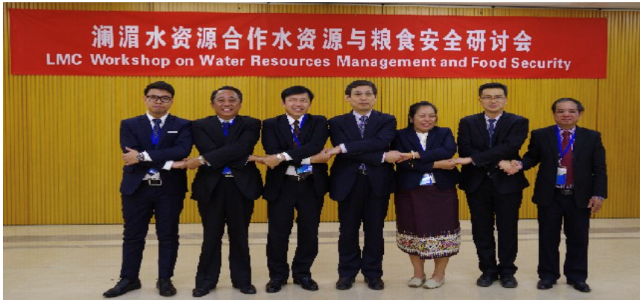The Lancang river basin originates in China and extends to the five countries downstream connecting Thailand, Laos, Cambodia, Vietnam, and Myanmar where it is referred to as the Mekong river. The Lancang-Mekong river basin possesses huge potential for the economic development of the people residing in that area, basically in the form of hydropower development. However, the construction and some under-construction of mega hydropower projects and dams regulates the flow of water affecting the livelihood of the people depending on fishing and agriculture downstream.
Equitable benefit sharing of water
The Lancang-Mekong Cooperation (LMC) was established with a theme of Shared river shared future in 2012 to support the sub-regional countries in economic and social development, uplifting the well-being of the people and to narrow the development gap among the Association of Southeast Asian Nation (ASEAN) community as well as promoting the implementation of the UN 2030 agenda for sustainable development. LMC is a sub-regional cooperation mechanism for the efficient water resource management of water across the basin.
Knowledge exchange
For transboundary water collaboration, GWP China and GWP Southeast Asia, with GWPO support, set up a partnership with the Lancang- Mekong Water Resource Cooperation Center (LMWRCC). LMWRCC with the support of GWP organized a workshop on Flood control and Drought relief technologies in December 2018. Similarly, under the support of GWP China and GWP Southeast Asia (GWP SEA), LMWRCC organized the seminar on ‘Water and Food Security’ on December 5 and 7, 2017, in Beijing where the representatives from the five riparian countries were invited. LMWRCC organized multiple activities of communications, capacity building, and interactive visits to acquire water-related innovative techniques or knowledge, and exchange practices or experiences.
Collaborative approach for sustainable development
The LMWRCC and GWP work efficiently on implementing IWRM, information sharing, and knowledge exchange, energy, economic development, and poverty relief in the Lancang-Mekong river basin countries. This transboundary collaboration has initiated knowledge sharing among nations as well as the development of Five-Year Strategy of the Lancang-Mekong Cooperation Development in which GWP China and GWP Southeast Asia facilitated identify national water development priorities such as joint research and analysis on climate change; implementation of pilot projects as well as cooperation projects for adaptation technology; and improve water quality monitoring system for the plan of action. This Multi-Stakeholder Partnership (MSP) approach further strengthens collaboration and enables cooperation and mutual understanding among the riparian countries for interregional sustainable development in the ASEAN region.

